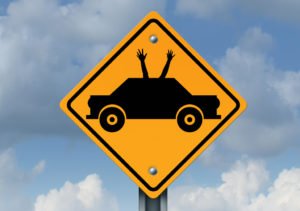A woman has died in Arizona after being hit by an Uber self-driving car – it is reported to be the first time a pedestrian has died as a result of a self-driving car accident.
 In 2016, a Tesla employee was killed while operating a self-driving car.
In 2016, a Tesla employee was killed while operating a self-driving car.
The Science Media Centre has asked local experts to comment on the accident.
Michael Cameron, author of an upcoming Law Foundation report on driverless vehicles in New Zealand, comments:
“Driverless vehicles will be safer than the human-controlled vehicles. Some regulation is necessary, but any regulation that slows down the adoption of driverless technology will likely cost many more lives than it saves.
“In 1896, the 45-year-old Bridget Driscoll became the first recorded pedestrian fatality to be killed by a motor vehicle. And in 2018, it appears that 49-year-old Elaine Herzberg has tragically become the first pedestrian to be killed by a driverless vehicle.
“Back in 1896, the nascent motor vehicle industry managed to avoid a regulatory backlash from the Driscoll tragedy. But these are different times. There have already been calls for tighter regulations by the director of Consumer Watchdog in the US. The irony is that, this time around, we actually have a technology that is safer than the existing technology it will replace.
“The fact the vehicle wasn’t technically driverless and had a supervising driver constantly ready to take over is a detail likely to be lost in the response, but it is extremely important. While we won’t know for sure until the investigation is complete, the supervising driver would have been a highly skilled professional, and he or she also failed to avoid Ms Herzberg.”
Professor Hossein Sarrafzadeh, Adjunct Professor, High Tech Research, Unitec, comments:
“Firstly this news has been very sad to hear and my sympathies go out to the families of those that were involved. As exciting as the development of these technologies are, accidents do happen and it is always unfortunate when human lives are impacted.
“With the rapid emergence of driverless cars and autopilot technology, such an incident was likely to occur sooner or later. The accident took place on Sunday and is the first fatal accident involving a driverless car. The cause of the accident has still not been determined and I am sure there will be greater emphasis on the safety of these systems following the investigation, however, it is important to take this single event into context when considering the overall safety of these cars, particularly in comparison to human-operated vehicles.
“The Uber autonomous car in question apparently had a driver in the front seat meant to take over in such situations of risk. In addition to safety, security is another concern that needs to be taken into consideration by the developers of such high technologies.
“The rate of accidents to the number of hours such cars have been tested, despite this sad incident, still makes them far less risky than human driven cars. The future testing of the cars on open roads will be affected following this event and this will result possibly in legislation that may limit such testing also. Uber has already put the testing of its 200 autonomous vehicles on hold for the time being.
“There is no doubt that more work needs to be done to make autonomous cars safer. Equipping roads with sensors, wearable technologies, AI and machine learning are just some of the technologies that will need to be employed to increase the safety and security of these technologies. We need to hold any judgment until investigations have been undertaken and videos and other data relating to the accident have been analysed. Innovation will continue.”
Dr Paul Ralph, senior lecturer in computer science, University of Auckland comments:
“It’s critical to keep these things in perspective. People are using this incident to dismiss driverless cars as unsafe. Human drivers have killed hundreds of thousands of people. A driverless car has killed one. Moving to autonomous vehicles as quickly as possible is still the best way to reduce automotive collisions and their enormous cost in money, time and human life.
“Now that said, we’re talking about Uber, a company with a terrible reputation for unethical behaviour and technological corner-cutting. If Uber knew that their autonomous vehicles were running red lights and did not take reasonable steps to correct the mistake, the company should be held criminally responsible for this woman’s death. The individuals who ignored the problem should be held personally, criminally responsible – e.g. they might be charged with vehicular manslaughter or negligent homicide.
“The problem is that this research should be funded by governments and carried out by expert researchers in public-private partnerships. But national governments, including New Zealand’s, remain unwilling to invest in innovation at the scale demanded by the 21st Century.”